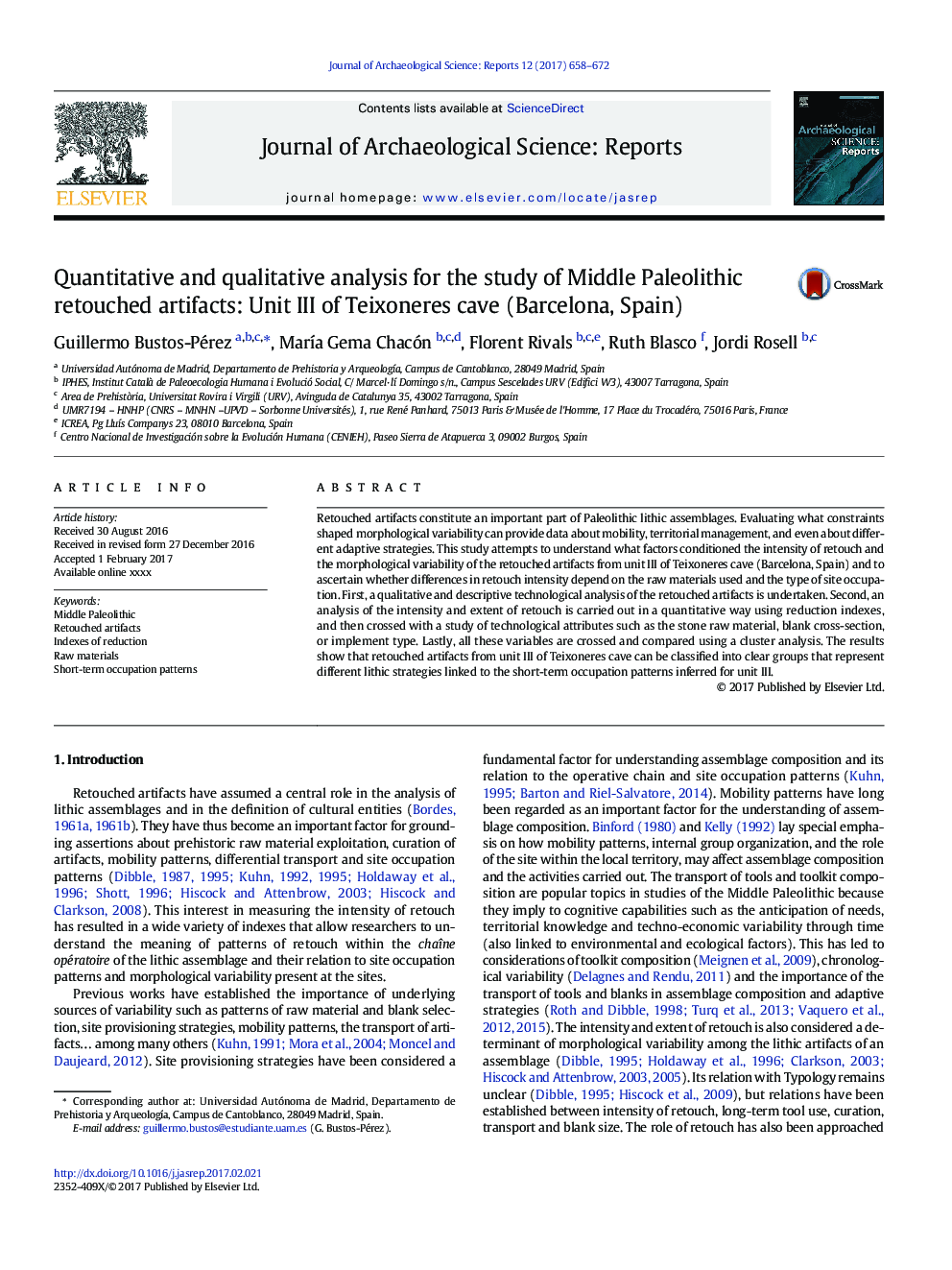| Article ID | Journal | Published Year | Pages | File Type |
|---|---|---|---|---|
| 5112527 | Journal of Archaeological Science: Reports | 2017 | 15 Pages |
Abstract
Retouched artifacts constitute an important part of Paleolithic lithic assemblages. Evaluating what constraints shaped morphological variability can provide data about mobility, territorial management, and even about different adaptive strategies. This study attempts to understand what factors conditioned the intensity of retouch and the morphological variability of the retouched artifacts from unit III of Teixoneres cave (Barcelona, Spain) and to ascertain whether differences in retouch intensity depend on the raw materials used and the type of site occupation. First, a qualitative and descriptive technological analysis of the retouched artifacts is undertaken. Second, an analysis of the intensity and extent of retouch is carried out in a quantitative way using reduction indexes, and then crossed with a study of technological attributes such as the stone raw material, blank cross-section, or implement type. Lastly, all these variables are crossed and compared using a cluster analysis. The results show that retouched artifacts from unit III of Teixoneres cave can be classified into clear groups that represent different lithic strategies linked to the short-term occupation patterns inferred for unit III.
Keywords
Related Topics
Social Sciences and Humanities
Arts and Humanities
History
Authors
Guillermo Bustos-Pérez, MarÃa Gema Chacón, Florent Rivals, Ruth Blasco, Jordi Rosell,
